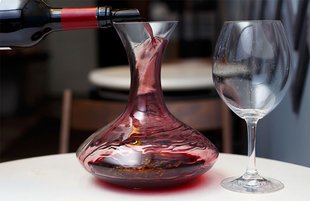Guide to Decanting Port: Why & How To Do It Perfectly
Decanting Port wine is crucial if you want to unlock its sumptuous aromas and flavors!
While the process may seem slightly daunting, that isn’t the case. We’ll tell you the benefits of decanting this Douro Valley wine, how to decant this fortified wine properly, and how to store an opened bottle.
Further reading
- Here’s all you need to know about Port wine and the best bottles to buy.
- Also, discover How To Drink The Sumptuous Port Wine the right way.
2 Easy Ways To Decant Port Wine
Decanting Port depends on how old your bottle is. The rule of thumb is, an older wine requires less decanting time than younger wines.
Here are two decanting methods for your bottle of vintage Port.
A. The Traditional Method
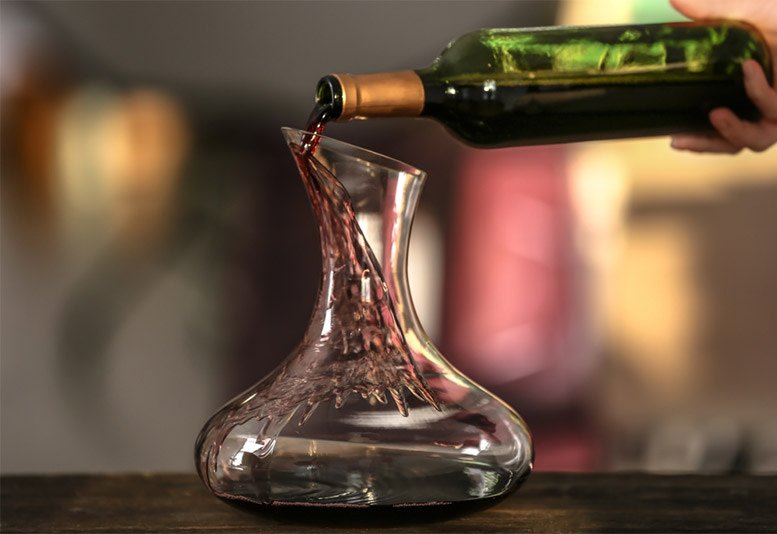
Follow these steps to decant a bottle of Port using the traditional method.
- Gently stand the Port wine bottle upright for 30-60 minutes for older red wines and 2-3 hours for vintages younger than 40 years.
- Softly remove the cork with a corkscrew without shaking the bottle. Let the wine sit in the bottle for 15 more mins if you have shaken the bottle roughly.
- Tip the bottle of Port wine into a clean decanter until the sediment reaches the neck of the bottle.
- Let the wine sit in the decanter for 15-30 mins before pouring it into a Port wine glass.
B. The Hersh Method
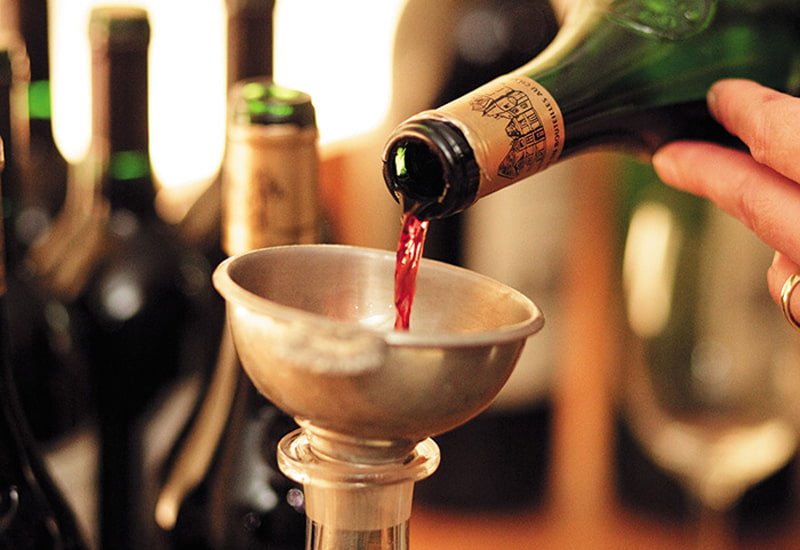
You’ll need a Port funnel, a decanter, and an unbleached cheesecloth for decanting Port with the Hersh method. Here’s how to do it.
- Fold the unbleached cheesecloth and place it inside the decanting funnel.
- Place the decanting funnel on the mouth of a glass decanter and pour the Port into the funnel and allow the cheesecloth to collect the sediment.
- Let the vintage Port rest in the glass decanter for 2-3 hrs (for a young wine) and 30-60 mins for a 40+-year-old Vintage Port.
The Hersh method is perfect for decanting a young wine (especially a bottle aged Port or a Vintage Port) since it doesn’t require keeping the bottle upright for hours.
Why Should Port Be Decanted?

Vintage Ports spend only two years in wood casks before being bottled, unfiltered. Over time as the wine ages, the sediments settle in the bottle.
This is why you should decant a vintage Port so that there’s no deposit when you serve it.
Decanting a Vintage Port has two main benefits:
- Decanting Port helps the sediment to settle down so you can thoroughly enjoy your drink.
- Younger Vintage Port wines, when left in a glass decanter, develop a fuller body. Decanting Port also opens the aroma and flavour of the wine.
Do All Types of Port Wine Need Decanting?

Here’s a quick guide to decanting different Port wines.
- CrustedPort: Since Crusted Port is not filtered, decant it for 1-2 hours.
- Vintage Port: Decant this aged Port for about 2 hours.
- Ruby Port: This nascent Port is best enjoyed as a table wine and does not require decanting.
- Tawny Port: Tawny wine and aged Tawny Port does not need to be decanted as the wine is stored in oak vats or a barrel.
- White Port: The 10-year-old White Port should be decanted for 5-15 minutes before serving.
- Traditional or Unfiltered Late Bottled Vintage Port (LBV Port) - Decant younger LBVs for 10-12 hours, while an older bottle needs only 1-3 hours of decanting time.
- Colheita Port - Older Colheita Port doesn’t require decanting.
Curious about what to do with your leftover decanted Port?
How To Store Decanted Port Wine

The best way to store an open bottle of Port is to pour the wine from the decanter back into its bottle.
Use rubber stoppers to cut off the air from the wine bottle to ensure that your wine keeps well until the next time you want to enjoy it.
You can store an open bottle of Port for 4-12 weeks.
Did you know that Bordeaux wine is more challenging to decant than Port?
Port Vs. Bordeaux: The Decanting Process
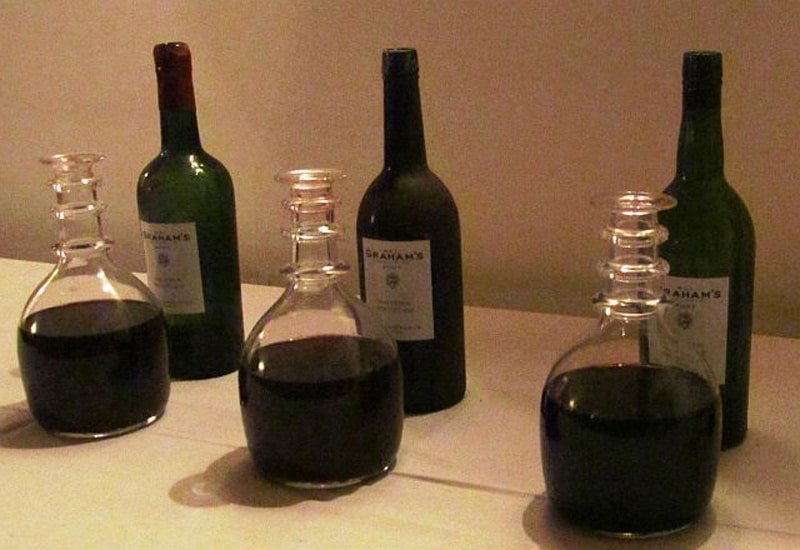
Port is easier to decant than Bordeaux - here’s why:
- Unlike Port, Bordeaux comprises very fine sediment, meaning that it will take longer for the deposit to settle at the bottom of the bottle. On the other hand, Port sediments are heavier and settle at the bottom, so they stay there while you fill your glass.
- Sediment in a glass of Bordeaux red wine would seem much more bitter and conspicuous and affects the entire drinking experience. But, since Port is sweeter, the sediment may not taste so astringent.
Decant Your Port While You Invest in Wine Bottles!
A glass of Port is best enjoyed as a dessert wine without sediments.
Did you know Vintage Port also makes an excellent investment?
A reputable wine investment platform like Vinovest makes buying a bottle of Port, Pinot Noir, Cabernet Sauvignon, and even a luscious white wine super easy with its AI-driven platform.
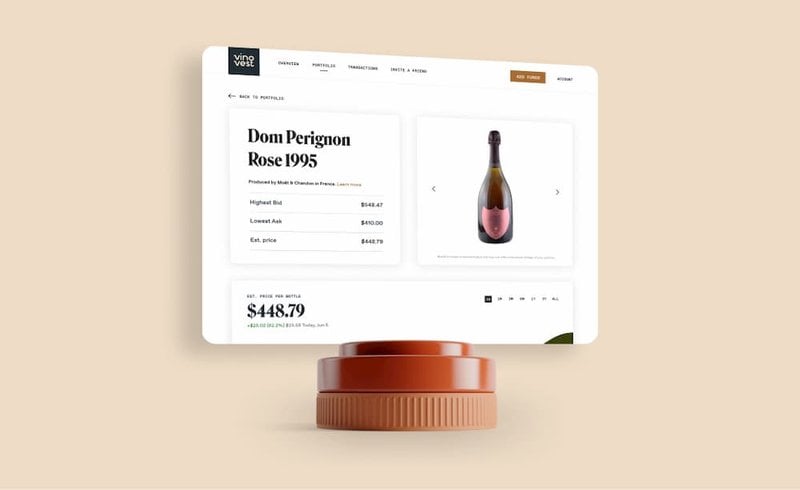
Sign up on Vinovest’s websiteto discover more about buying, storing, and selling cellar-worthy fine wine bottles from across the world.
